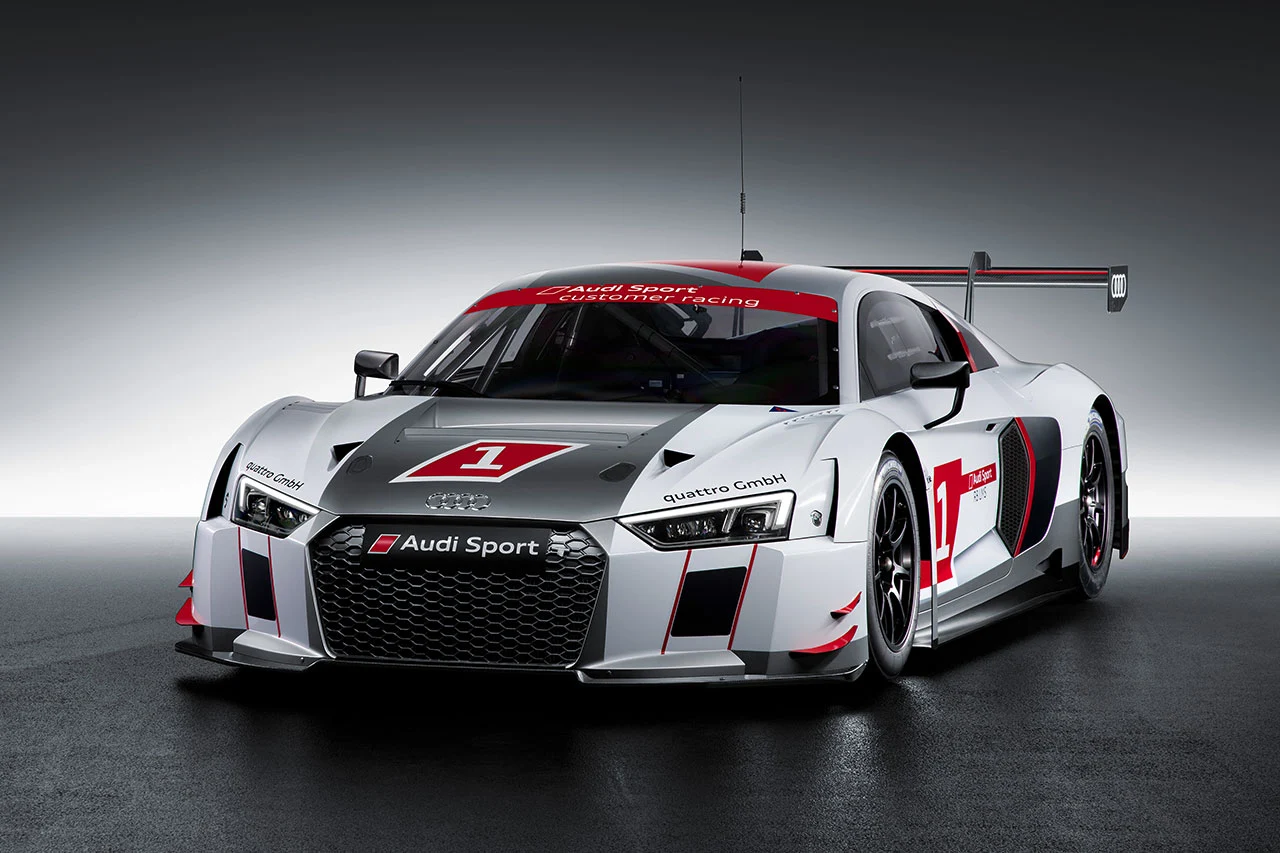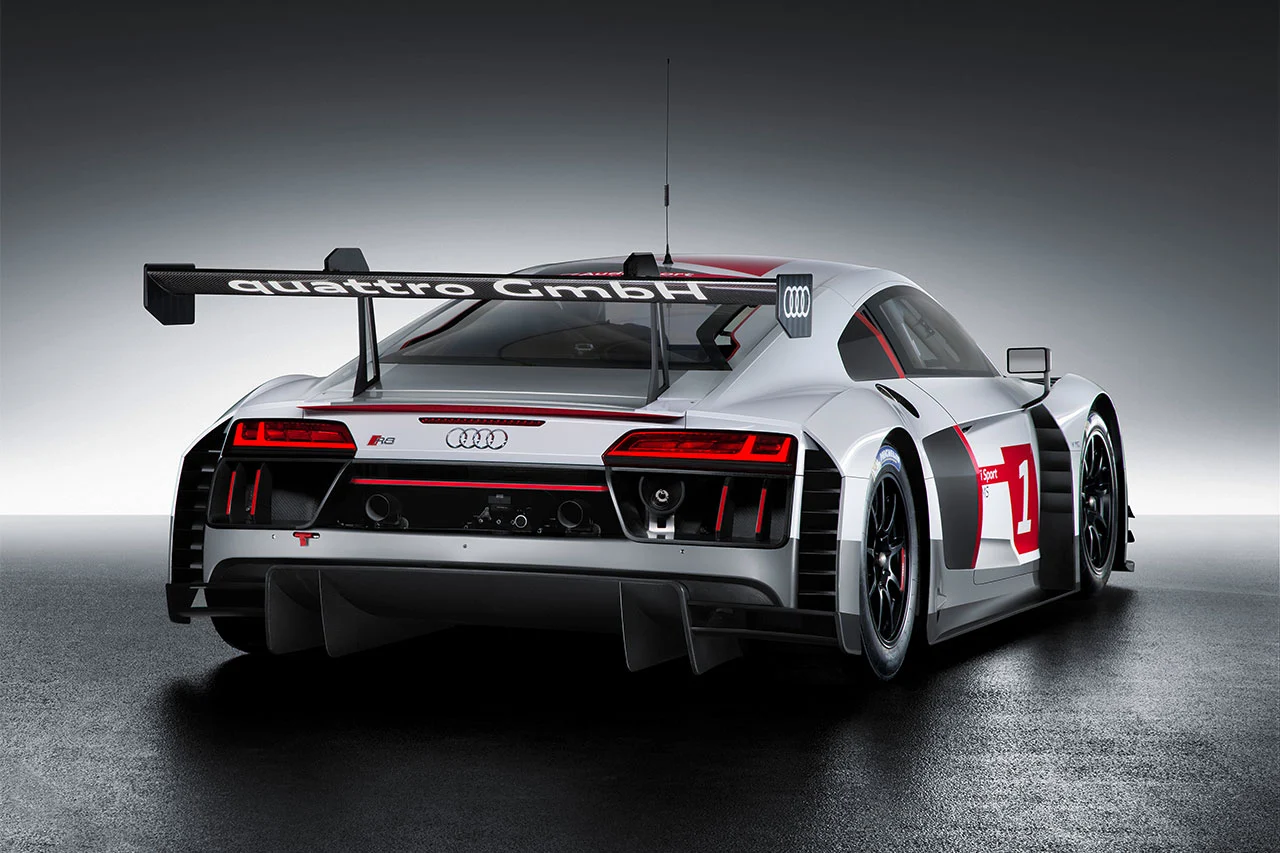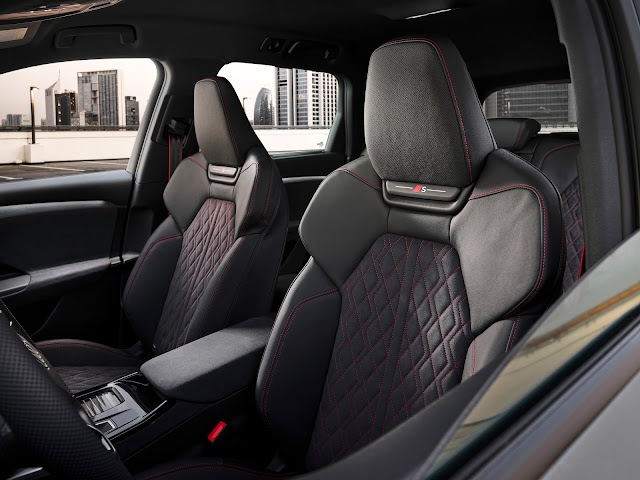Audi R8 LMS establishes new race car generation: Lighter and safer than ever before
Back in spring of 2014, Audi began testing the new R8 LMS that is following in big footsteps. The track record of the first generation of the Audi R8 LMS reflects 26 GT3 Championship wins between 2009 and 2014, plus 23 titles in other classifications and seven overall victories in 24-hour races. In 2015, customers around the world are again relying on the success model from Neckarsulm of which the company has sold more than 130 cars worldwide since 2009.
The first racing commitments of the new R8 LMS such as the 24-hour races at the Nürburgring (May 16/17) and at Spa (July 25/26) have already been scheduled. quattro GmbH that develops and assembles the race cars will begin to take customer orders in the second half of the year and is planning to deliver the first models of the second generation by the end of 2015.
At the same time, on presenting the successor model, Audi is preparing for the promising future of GT3 racing and plays a pioneering role in the process. The new Audi R8 LMS clearly surpasses the safety requirements of the regulations to be introduced in 2016. Thanks to a modified structure of the front end and a CFRP crash element at the rear that is being used for the first time the GT3 race car meets the crash test requirements that apply to the much lighter Le Mans prototypes (LMP) such as the Audi R18 e-tron quattro. The Audi Protection Seat PS 1 that will also be used in the R8 LMS in the future has been setting seating technology standards in the LMP class for years. It is connected to the chassis for increased stiffness. A quickly adjustable foot lever system and a height and length adjustable safety steering column allow versatile adjustment to the various drivers. A rescue opening in the roof as used in DTM race touring cars is now being introduced in a GT3 race car for the first time as well. After an accident, it allows the driver’s helmet to be lifted in a way that avoids straining the spinal column.
Audi systematically leverages its lightweight design expertise in the new R8 LMS. Despite the additional weight resulting from the above innovations the base weight of the race car has been reduced from 1,250 to 1,225 kilograms. The intelligent material mix of aluminium in the Audi Space Frame (ASF), a structural CFRP component and the steel roll cage alone make the chassis about 30 kilograms lighter – now weighing 252 kilograms. At the same time, the torsional stiffness of the stressed frame has increased by 39 percent.
Although the material mix in a race car is more complex, Audi has managed to integrate the manufacturing process for production and race cars even more closely than before. In a new manufacturing facility at the Böllinger Höfe industrial park in Heilbronn, quattro GmbH produces both variants in combination. Although the race car, for example, is fitted with aluminum cast joints and a steel roll cage the racing chassis of the R8 LMS remains integrated in the basic production process up to and including the stages of roof assembly and cathodic dip painting (CDP), which is a form of priming. Following these production steps, the race cars are completed in Heilbronn-Biberach.
Audi uses production parts in the new R8 LMS whenever this makes sense in racing from a technical and economic point of view. For example, the V10 engine with 5.2 litres of displacement and a power output of up to 430 kW (585 hp) leaves the same line as the production unit. It remains nearly unchanged and, with a scheduled rebuild interval of 20,000 kilometres, stets standards in racing. The engineers use modified or completely new assemblies whenever this is required in racing by the regulations or by the clearly higher loads that occur in competitive conditions. The production ASF chassis, for instance, is modified whereas the completely new bodywork is made of CFRP. The suspensions now use wishbones strictly designed for racing for the first time and the six-speed transmission with paddle shifters is a completely new development as well. It is significantly lighter than its predecessor while its efficiency has increased because the previous drop gear system has been eliminated. The new MS 6.4 electronics include engine electronics, traction control and software for the electro-hydraulic gearshift. The powerful processor enables higher processing speeds that result in faster responses. A power box is another new feature. It replaces the traditional fuse box and makes it possible to define individual loads and scenarios.
The new aerodynamic concept of the Audi R8 LMS for the first time includes a fully lined underfloor and a conceptually integrated rear diffusor. As a result, the dimensions of the rear wing can be reduced without a corresponding increase of aerodynamic drag. The wheel wells, which are open rearwards via a larger cross-section, contribute to improved airflow. The airflow rate and cooling area of the radiator at the front have increased by ten percent to handle maximum outside air temperatures. In order to improve the race drivers’ ability to concentrate on their tasks, fresh air circulation in the cockpit has been improved. At a speed of 200 km/h, the airflow rate is 250 litres per second. Audi has achieved these improvements despite the significantly higher constraints imposed on aerodynamics design by the 2016 regulations.
Audi Press
The first racing commitments of the new R8 LMS such as the 24-hour races at the Nürburgring (May 16/17) and at Spa (July 25/26) have already been scheduled. quattro GmbH that develops and assembles the race cars will begin to take customer orders in the second half of the year and is planning to deliver the first models of the second generation by the end of 2015.
At the same time, on presenting the successor model, Audi is preparing for the promising future of GT3 racing and plays a pioneering role in the process. The new Audi R8 LMS clearly surpasses the safety requirements of the regulations to be introduced in 2016. Thanks to a modified structure of the front end and a CFRP crash element at the rear that is being used for the first time the GT3 race car meets the crash test requirements that apply to the much lighter Le Mans prototypes (LMP) such as the Audi R18 e-tron quattro. The Audi Protection Seat PS 1 that will also be used in the R8 LMS in the future has been setting seating technology standards in the LMP class for years. It is connected to the chassis for increased stiffness. A quickly adjustable foot lever system and a height and length adjustable safety steering column allow versatile adjustment to the various drivers. A rescue opening in the roof as used in DTM race touring cars is now being introduced in a GT3 race car for the first time as well. After an accident, it allows the driver’s helmet to be lifted in a way that avoids straining the spinal column.
Audi systematically leverages its lightweight design expertise in the new R8 LMS. Despite the additional weight resulting from the above innovations the base weight of the race car has been reduced from 1,250 to 1,225 kilograms. The intelligent material mix of aluminium in the Audi Space Frame (ASF), a structural CFRP component and the steel roll cage alone make the chassis about 30 kilograms lighter – now weighing 252 kilograms. At the same time, the torsional stiffness of the stressed frame has increased by 39 percent.
Although the material mix in a race car is more complex, Audi has managed to integrate the manufacturing process for production and race cars even more closely than before. In a new manufacturing facility at the Böllinger Höfe industrial park in Heilbronn, quattro GmbH produces both variants in combination. Although the race car, for example, is fitted with aluminum cast joints and a steel roll cage the racing chassis of the R8 LMS remains integrated in the basic production process up to and including the stages of roof assembly and cathodic dip painting (CDP), which is a form of priming. Following these production steps, the race cars are completed in Heilbronn-Biberach.
Audi uses production parts in the new R8 LMS whenever this makes sense in racing from a technical and economic point of view. For example, the V10 engine with 5.2 litres of displacement and a power output of up to 430 kW (585 hp) leaves the same line as the production unit. It remains nearly unchanged and, with a scheduled rebuild interval of 20,000 kilometres, stets standards in racing. The engineers use modified or completely new assemblies whenever this is required in racing by the regulations or by the clearly higher loads that occur in competitive conditions. The production ASF chassis, for instance, is modified whereas the completely new bodywork is made of CFRP. The suspensions now use wishbones strictly designed for racing for the first time and the six-speed transmission with paddle shifters is a completely new development as well. It is significantly lighter than its predecessor while its efficiency has increased because the previous drop gear system has been eliminated. The new MS 6.4 electronics include engine electronics, traction control and software for the electro-hydraulic gearshift. The powerful processor enables higher processing speeds that result in faster responses. A power box is another new feature. It replaces the traditional fuse box and makes it possible to define individual loads and scenarios.
The new aerodynamic concept of the Audi R8 LMS for the first time includes a fully lined underfloor and a conceptually integrated rear diffusor. As a result, the dimensions of the rear wing can be reduced without a corresponding increase of aerodynamic drag. The wheel wells, which are open rearwards via a larger cross-section, contribute to improved airflow. The airflow rate and cooling area of the radiator at the front have increased by ten percent to handle maximum outside air temperatures. In order to improve the race drivers’ ability to concentrate on their tasks, fresh air circulation in the cockpit has been improved. At a speed of 200 km/h, the airflow rate is 250 litres per second. Audi has achieved these improvements despite the significantly higher constraints imposed on aerodynamics design by the 2016 regulations.
Audi Press





Comments
Post a Comment